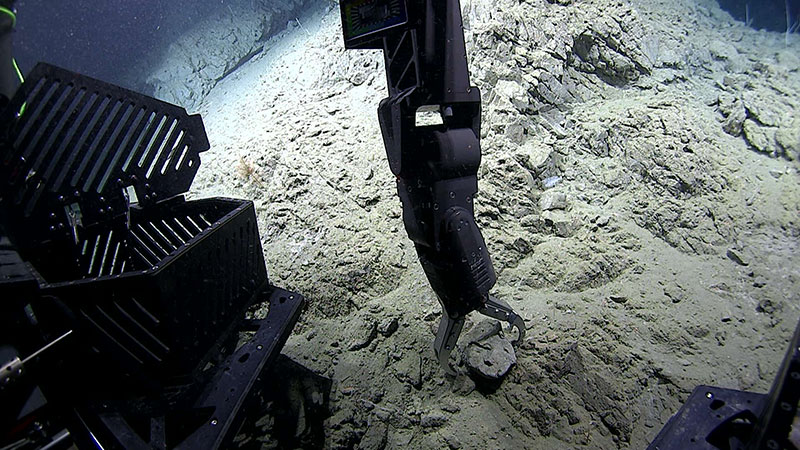

The arm of remotely operated vehicle Deep Discoverer samples fractured, well-cemented mudstone near the top of the transect at the second dive site of the Seascape Alaska 3 expedition. This location was dubbed "Big Bend" for the steep-sided, 2-kilometer (1.2-mile) wide slope canyon that makes a sharp eastward bed nearing the basin floor. The canyon would have been down-dip (seaward) from the edge of glaciers during the last glacial maximum approximately 26,000 years ago. This well-cemented, fractured mudstone, collected at a depth of 2,165 meters (7,105 feet), was one of three geological samples collected during the dive. Red laser dots (center view) are 10 centimeters (4 inches) apart for scale. Microfossil paleontology and/or tephrochronology may provide insight into the age of these sedimentary rocks and formation of the canyon.